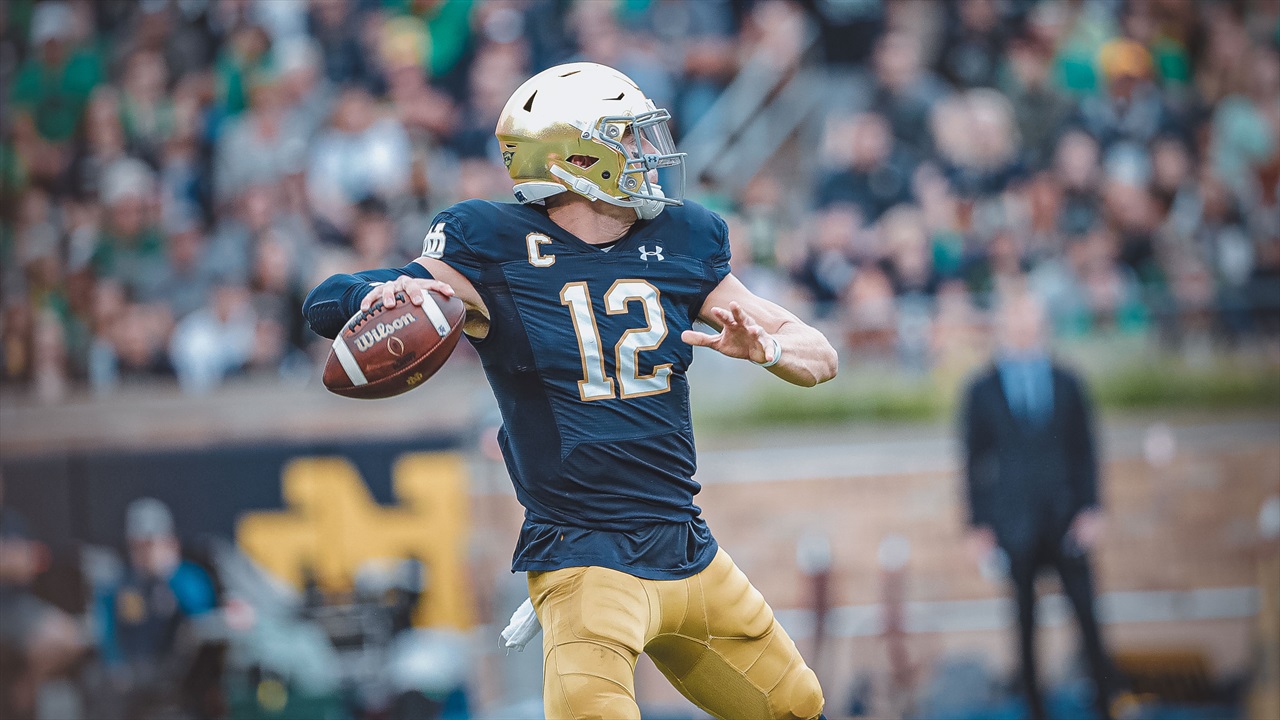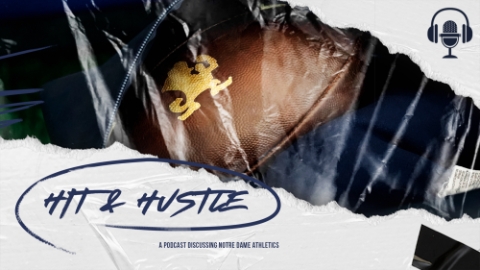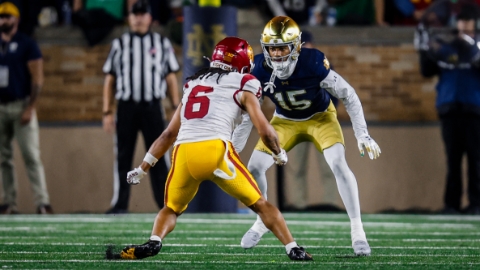
Based on his profile alone, Ian Book would be an ideal pupil for any quarterback coach.
The Notre Dame signal-caller is seasoned enough to grasp advanced concepts, but still young enough to make tremendous strides both physically and mentally, especially mentally.
On top of that, he’s the kind of student teachers dream of having.
“He’s one of those players, once he gets something, once he understands it, he continues to work on it,” says Will Hewlett, who has worked as Book’s personal quarterback coach since high school.
Hewlett, who is part of the respected QB Collective group, doesn’t get as much time to work with Book in-person these days as he did when Book was a high-schooler. But the two are sure to hook up at least once a year and stay in regular contact throughout the year.
“Ian and I have constant communication throughout the offseason, and through his entire career,” says Hewlett. “We talk about making little tweaks and improvements and then we try to get in person together at least once every offseason.”
Last month, they had their annual visit when they connected in Texas for a couple days to train. Book was able to bring Irish tight end and Houston native Brock Wright with him while former Notre Dame receiver Chris Finke also made a quick appearance.
“There were some things we’d been playing around with that we knew we wanted to work on, which we talked about through video and communication prior to that,” says Hewlett. “It just lined up really well for both of us…and we could finally jump on some of the changes and tweaks we wanted to make going into this season.”
Book and Hewlett weren’t looking to make any big changes or overhaul his game in any major way, but relatively minute changes can still make a major difference, especially in “pre-professional” quarterbacks.
“Not to get super science-y, but the prefrontal cortex doesn’t fully develop in males until they’re 25 years old,” says Hewlett. “That’s the control system for a lot of things and elements of decision-making and reaction. That’s kind of an ongoing process for young men. So, one year can make a huge difference just from a cognition developmental standpoint.
“Ironically, it ends up being more about the mental side as you go. The physical improvements are going to be great, but there’s going to be a point where the differentiating factor is going to be the ability to process and see things.”
Every time Book and Hewlett hook up, they’re trying to “level up.”
“When we get out there, we know what we’re going to get after,” says Hewlett. “There’s no gray area.”
The major focus of this spring’s session was footwork techniques to give Book a larger toolbox.
“He’s going to take those and work through stuff with Coach (Tommy) Rees to make sure it makes sense for them team-wise,” says Hewlett. “We continue to work on posture and alignment with his body, making sure all of our throws match up better.”
Hewlett likens the plays that make up a playbook as fitting into different families.
“Each family ties into a different type of footwork,” he explains. “The family is dictated by how long it takes for the play to develop. Shorter plays require shorter footwork. Longer plays require longer footwork. Then you have things like play-action, which require combinations.
“The biggest variable is going to be right versus left, which seems very, very simple, but it’s actually a big difference. Then, on top of that, part of playing quarterback is you dictate the movements of defenders as much as defenders dictate your movement.”
Hewlett explains a quarterback can force defenders to react by positioning his shoulders a “a certain way on a certain play based on a certain coverage.”
“You can either use that to your advantage or you can be unaware of it and essentially stare down a throw for an interception,” he continues. “I like to describe it as ‘Let your posture tell a story that’s either untrue or true.’
“So, if I want to make this throw, how do I make it look like a different throw until the last moment?”
In addition to working on “deceptive footwork,” Hewlett is always stressing body positioning.
“Putting ourselves in a biomechanically sound position on all throws, a more efficient position when you’re ready to pull the trigger, especially to his left side,” he says.
“Giving him some more options, more strategies to utilize in the pocket that can slow things down for him and put him in a better position to pull the trigger on standard throws.”
Hewlett estimates Book got around 1,000 throws in during the two-day session, “which is pretty high volume.”
There are “levels of complexity” to becoming an elite quarterback, according to Hewlett. Book is at the point where he understands his offense and understands the timing of plays, so he can work on more advanced concepts than a first-year college player.
“They’re probably still figuring out, ‘Where do I even put my eyes?’ Let alone, ‘How do I set this defender up?’” says Hewlett.
“I think that’s part of my job, to make somewhat complex strategies quite simple. As a coach, my role is to lead him to the right solution.”
In addition to the mental and physical takeaways, Hewlett believes the sessions help with Book’s mindset.
“It kind of continues to bowl over in confidence. He comes out and feels even better about what he’s doing.”

